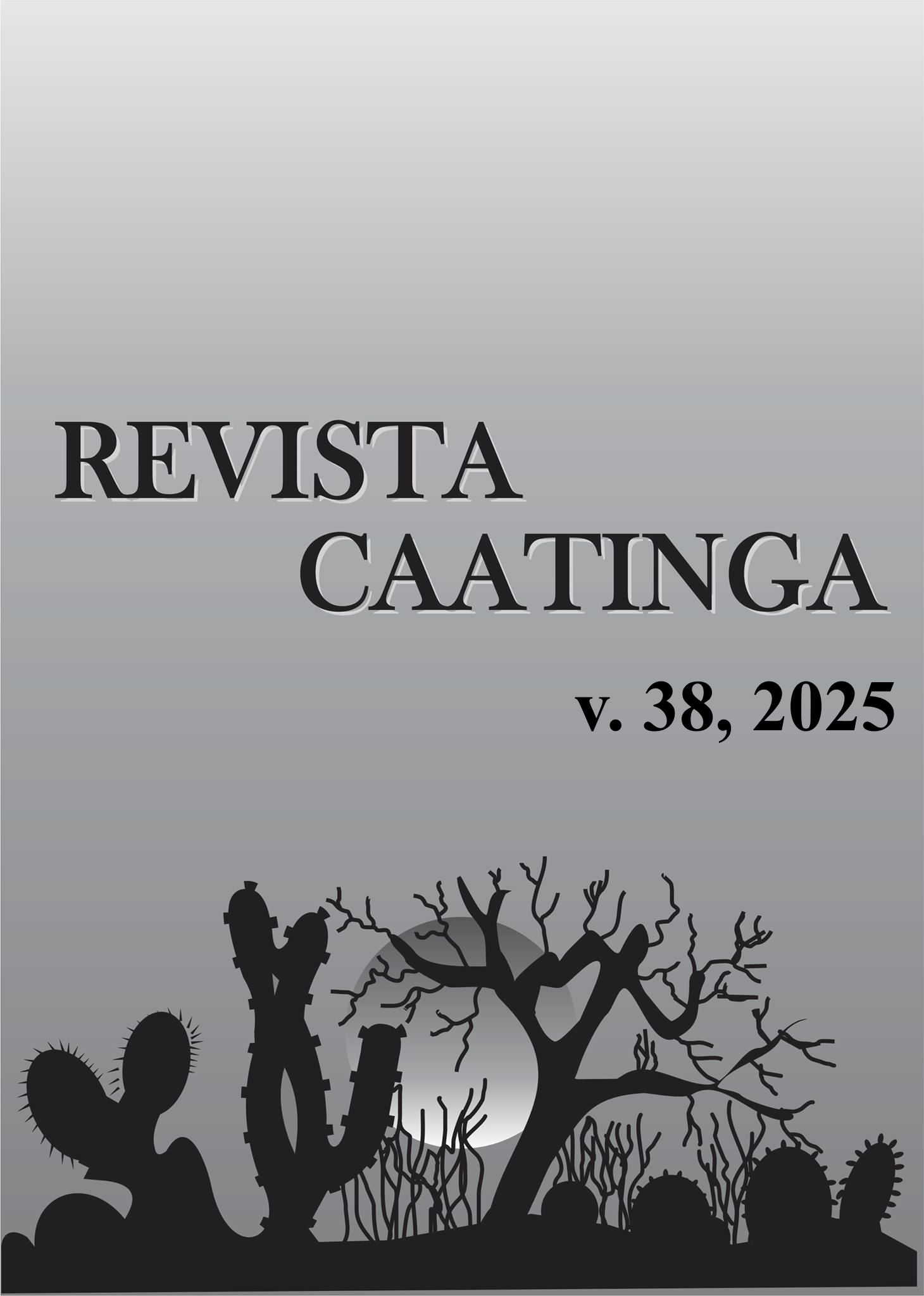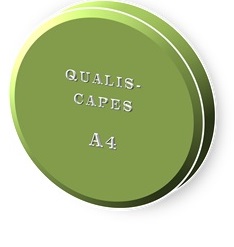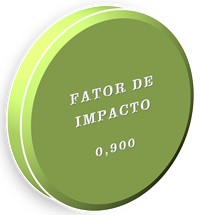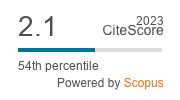Effects of soil compaction and wood ash application on reproductive components of safflower
DOI:
https://doi.org/10.1590/1983-21252025v3812689rcKeywords:
Physical attribute. Solid waste. Oilseed. Productive characteristics.Abstract
Increased mechanization favors subsurface soil compaction, and the addition of agro-industrial waste can improve its chemical and physical characteristics. The objective of this study was to evaluate the reproductive components of safflower cultivated in Brazilian Cerrado soil compacted and fertilized with wood ash. The experiment was conducted in a greenhouse with a randomized block design with five levels of compaction and fertilized with five doses of wood ash, with 4 replicates, totaling 100 experimental units. The data on the number of branches, days to flowering, number of capitula, capitulum dry mass and total shoot dry mass were collected 75 days after plant emergence at the time of harvest. The results were subjected to analysis of variance; when significant, regression was applied with a significance of up to 5%. All the variables analyzed were affected by compaction level and wood ash level. The dose of wood ash that provided the highest shoot dry weight was 25.25 g dm-3. For the soil bulk density levels, the linear decreasing regression model was adjusted as the soil bulk density levels increased. Thus, the addition of wood ash is beneficial for the development of safflower crops up to a dose of 24 g dm-3, and an increase in soil compaction from 1.2 Mg dm-3 is harmful to plant development.
Downloads
References
ALCARDE, J. C. Manual de análise de fertilizantes. Piracicaba, SP: FEALQ, 2009.
ALMEIDA, L. C. F. et al. Seriam as questões ambientais entraves ao desenvolvimento do Vale do Ribeira? Cadernos Ceru, 28: 93-104, 2017.
BONFIM-SILVA, E. M. et al. Initial development of cowpea submitted to wood ash doses. International Journal of Plant & Soil Science, 17: 1-7, 2017a.
BONFIM-SILVA, E. M. et al. Wood ash as a corrective and fertilizer in the cultivation of mombaça and massai grass in Oxisol. Journal of Experimental Agriculture International, 21: 1-10, 2018.
BONFIM-SILVA, E. M. et al. Wood ash as corrective of soil pH and as fertilizer in ornamental sunflower cultivation. African Journal of Agricultural Research, 10: 3253-3264, 2015.
BONFIM-SILVA, E. M. et al. Phytometric and productive characteristics of safflower submitted to phosphate fertilization in the Oxisol of the Brazilian Cerrado. American Journal of Plant Sciences, 8: 2966-2976, 2017b.
BONFIM-SILVA, E. M. et al. Wood ash in Canavalia ensiformis L. cultivation on highly weathered soil in Brazil. International Journal of Plant & Soil Science, 6: 1-7, 2017c.
DJIEMON, A.; GASSER, M. O.; GALLICHAND, J. Random forests to detect subsoiling and subsurface drainage effects on corn plant height and water table depth. Soil and Tillage Research, 192: 240-249, 2019.
EMBRAPA - Empresa Brasileira de Pesquisa Agropecuária. Manual de métodos de análise de solo. 2. ed. Rio de Janeiro, RJ: Embrapa Solos, 2011. 198 p.
FAGUNDES, E. A. A.; SILVA, T. J. A.; BONFIM-SILVA, E. M. Desenvolvimento inicial de variedades de cana-deaçucar em Latossolo submetidas a níveis de compactação do solo. Revista Brasileira de Engenharia Agrícola e Ambiental, 18: 188-193, 2014.
FAO. Marco estratégico de la FAO para 2022-2031. 2022. Available at: <https://www.fao.org/brasil/pt/>. Access on: Jul. 31, 2022.
FERREIRA, D. F. Sisvar: a computer statistical analysis system. Ciência e Agrotecnologia, 35: 1039-1042, 2011.
FONTENELLI, J. V. et al. Methods of soil moisture maintenance for production of sunflower under controlled conditions. Australian Journal of Crop Science, 11: 580-584, 2017.
ISLABÃO, G. O. et al. Hydrophysical properties of a typic hapludult under the effect of rice husk ash. Revista Brasileira de Ciência do Solo, 40: 1-13, 2016.
LEHNHOFF, E. et al. Organic agriculture and the quest for the holy grail in water-limited ecosystems: Managing weeds and reducing tillage intensity. Agriculture, 7: 1-16, 2017.
LINHARES, A. J. S. et al. Soil compaction affects the silage quality of sunflower and Paiaguas palisadegrass (Brachiaria brizantha) grown on a Latosol in the Brazilian savanna. Australian Journal of Crop Science, 14: 1121-1130, 2020.
MAPA - Ministério da Agricultura Pecuária e Abastecimento. Instrução Normativa SDA no 17, de 21 de maio de 2007 - Métodos analíticos oficiais para análise de substratos e condicionadores de solos. Brasília, 2007. p. 1-8. Available at: <https://www.gov.br/agricultura/pt-br/assuntos/insumos-agropecuarios/insumos-agricolas/fertilizantes/legislacao/in-17-de21-05-2007-aprova-metodo-substrato.pdf>. Access on: Jul. 31, 2022.
NEVES, L. C. R. et al. Effect of soil compaction and coinoculation with Azospirillum brasilense on the development of peanut plants. Revista Caatinga, 33: 1049-1059, 2020.
NUNES, J. A. S.; BONFIM-SILVA, E. M.; SILVA, T. J. A. Bulk density and water tensions in the soil on corn root production. Revista Brasileira de Engenharia Agricola e Ambiental, 20: 357-363, 2016.
PALUDO, J. T. S. et al. Agronomic performance of Safflower genotypes (Carthamus tinctorius L.) under different soil bulk density levels in the Oxisol of the Cerrado. Australian Journal of Crop Science, 12: 407-412, 2018.
PALUDO, J. T. S. et al. Reproductive components of safflower genotypes submitted of sulk density levels in the Brazilian Cerrado. American Journal of Plant Sciences, 8: 2069-2082, 2017.
PEREIRA, M. T. J.; SILVA, T. J. A.; BONFIM-SILVA, E. M. Soil water content and wood ash fertilization on the cultivation of gladiolus. Revista Brasileira de Engenharia Agricola e Ambiental, 20: 350-356, 2016.
QUEIROGA, V. P.; GIRÃO, E. G.; ALBUQUERQUE, E. M. B. Cártamo (Carthamus tinctorius L.): tecnologias de plantio e utilização. 1. ed. Campina Grande, PB: AREPB, 2021.
SANTOS, H. G. et al. Sistema brasileiro de classificação de solos. 5. ed. Brasília, DF: Embrapa, 2018.
SAS INSTITUTE. User´s guide: statistics. 9th. ed. Cary: SAS, 2002.
SAUZET, O. et al. Nicodrilus nocturnus and Allolobophora icterica drill compacted soils but do not decrease their bulk density – A laboratory experiment using two contrasted soils at two different compaction levels. Geoderma, 402: 1-12, 2021.
SEDDAIU, G. et al. Long term effects of tillage practices and N fertilization in rainfed Mediterranean cropping systems: Durum wheat, sunflower and maize grain yield. European Journal of Agronomy, 77: 166-178, 2016.
SMOL, M. et al. The possible use of sewage sludge ash (SSA) in the construction industry as a way toward a circular economy. Journal of Cleaner Production, 95: 45-54, 2015.
TAIZ, L. et al. Fisiologia e desenvolvimento vegetal. 6. ed. Porto Alegre, RS: Artmed, 2017.
Downloads
Published
Issue
Section
License
Os Autores que publicam na Revista Caatinga concordam com os seguintes termos:
a) Os Autores mantêm os direitos autorais e concedem à revista o direito de primeira publicação, com o trabalho simultaneamente licenciado sob a Licença Creative Commons do tipo atribuição CC-BY, para todo o conteúdo do periódico, exceto onde estiver identificado, que permite o compartilhamento do trabalho com reconhecimento da autoria e publicação inicial nesta revista, sem fins comerciais.
b) Os Autores têm autorização para distribuição não-exclusiva da versão do trabalho publicada nesta revista (ex.: publicar em repositório institucional ou como capítulo de livro), com reconhecimento de autoria e publicação inicial nesta revista.
c) Os Autores têm permissão e são estimulados a publicar e distribuir seu trabalho online (ex.: em repositórios institucionais ou na sua página pessoal) a qualquer ponto antes ou durante o processo editorial, já que isso pode gerar alterações produtivas, bem como aumentar o impacto e a citação do trabalho publicado (Veja O Efeito do Acesso Livre).







